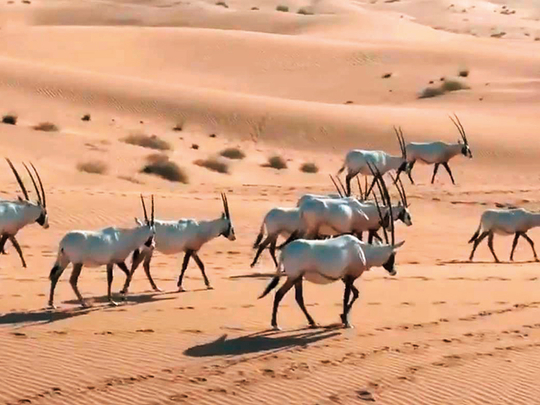
Abu Dhabi: Abu Dhabi’s natural habitats have thrived during the coronavirus-related Stay Home measures, the Environment Agency Abu Dhabi (EAD) announced on Tuesday.
This trend highlights the news to prioritise pollution reduction and environment conservations measures, the environment sector regulator said.
“These extraordinary circumstances of reduced human and vehicle movement, as well as decreased business and industrial activity have allowed the EAD to gain fresh insight into how these factors affect wildlife as part of the EAD’s continuing efforts in conservation and monitoring,” the authority said in a statement.
Bird numbers on the rise
“[We have seen] the number of rare birds increase,” the EAD said in a post on social media.
The rare birds include Kentish birds and black-winged stilts, which have been reproducing at a higher rate due to the absence of human activity in Al Wathba Wetland Reserve.
Birds have also been returning to residential areas as a result of people being home to feed them
At Al Ain’s Jebel Hafit, three little owl nests were discovered.
Natural habitats
Plant growth there increased in diversity due to lower levels of noise pollution and high levels of rain this year, while a female Arabian Tahir was spotted at the mountain’s base for the first time. According to the EAD, this species is typically present only at higher altitudes of the mountainous area.
Urban areas
A large number of mountain gazelles have also been sighted in Saadiyat Island’s urban areas, close to its golf course. Reduced movement and a decrease in noise and light pollution have allowed the animals to roam freely with ease
Long-term efforts
“Longer term efforts from EAD have seen the mortality rate of dugongs halved, and the breeding numbers of flamingoes increased,” the EAD said.
Specifically, there has been a 12 per cent year-on-year increase in the rate of breeding flamingoes, with nests increasing from 1,050 in 2019 to 1,260 in 2020. Flamingoes have also been sighted near passages and areas that they have previously avoided in the past
There have also been a greater number of turtles breeding along the Abu Dhabi coastline, particularly in Ras Ghanada Protected Area and Al Sila. The EAD explained that turtle nesting often indicates a healthy environment and ecosystem.
Effect of Stay Home measures
“During this period, we have [also] recorded improved air quality, with a significant decrease in nitrogen oxide levels in Abu Dhabi. The decreased pollution levels across the emirate is further supported by our recent biodiversity survey that reveals a healthy and thriving ecosystem,” said Dr Shaikha Salem Al Dhaheri, secretary general at the EAD.
The greater proliferation of wildlife noted in Abu Dhabi mirrors trends in the rest of the world during the coronavirus-related lockdowns and stay-home initiatives.
“The several months of ‘Stay at Home’ measures have showcased the real and apparent impact of human and business activity on the environment. This has allowed us to rethink how we as a community interact with the environment, and how we need to play our part to ensure these environmental gains are sustained and continue to grow as restrictions continue to ease,” Dr Al Dhaheri said.












